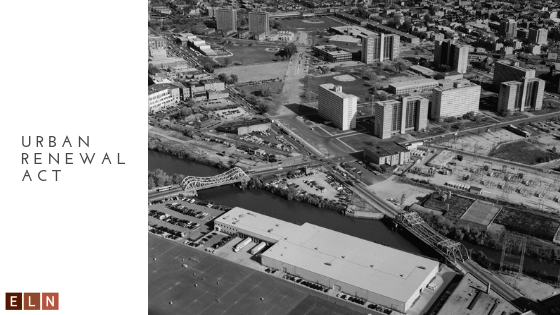During the Great Recession of 2007-2009, a slew of houses across the country fell into foreclosure. The foreclosure epidemic triggered an avalanche of defaults in the financial and other sectors. In turn, there was financial chaos.
The foreclosures triggered blight wherein dark, unkempt houses dotted cities across Colorado. This further contributed to the difficult economic times in which people had difficulty selling their homes to get out of debt because there were no takers. Colorado felt the sting of the recession and acted to reduce and eradicate blight.
Urban Renewal Act
To combat blight, Colorado passed the Urban Renewal Act, or the Act. In 2016, the Colorado Legislature updated the Act, in Colorado Revised Statute 31-25-103, to prevent blight. Under the Act, a municipality can declare an area or a property blighted, provided that five of the following 11 factors are satisfied:
- The area is a slum, has deteriorated, or contains deteriorating structures;
- The area has a street layout that is either defective or inadequate;
- Faulty lot layout in relation to size, adequacy, accessibility, or usefulness;
- The conditions in the area or property are either unsanitary or unsafe;
- There is deterioration of site or other improvements;
- The area or property has an unusual topography or lacks adequate public improvements or utilities;
- The area has defective or unusual conditions of title that renders the title unmarketable;
- The area or property has conditions that may endanger life or property by either fire or other causes;
- There are structures that are unsafe or unhealthy for people to live or work in due to building code violations, dilapidation, deterioration, defective design, physical construction, or faulty or otherwise inadequate facilities;
- The area or property has environmental contamination;
- There are high levels of municipal services or significantt physical underutilization or vacancy of sites, buildings, or other improvements;
In addition to these 11 factors, the Act also provides that “[i]f there is no objection by the property owner or owners and the tenant or tenants of such owner or owners, if any, to the inclusion of such property in an urban renewal area, ‘blighted area’ also means an area that, in its present condition and use and, by reason of the presence of any one of the factors specified in paragraphs (a) to (k.5) of this subsection (2), substantially impairs or arrests the sound growth of the municipality, retards the provision of housing accommodations, or constitutes an economic or social liability, and is a menace to the public health, safety, morals, or welfare. For purposes of this paragraph (1), the fact that an owner of an interest in such property does not object to the inclusion of such property in the urban renewal area does not mean that the owner has waived any rights of such owner in connection with laws governing condemnation.”
For questions about blight, urban renewal or other real estate legal needs in Colorado, contact the Law Offices of Eric L. Nesbitt, P.C. at 303-741-2354 or Info@NesbittLawOffices.com.

